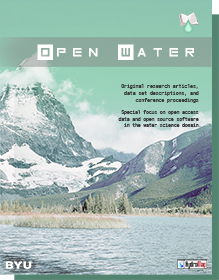Keywords
Sediment concentration, rating curve, transport limit, source limit, Lake Tana Basin
Abstract
Because of scarcity of continuous sediment data for rivers, methods have been developed to predict sediment loads based on few discontinues measurements. Traditionally, loads are predicted using rating curves that relate sediment load to discharge. The relationship assumes inherently a unique relationship between concentration and discharge and therefore although performing satisfactorily in predicting loads, it may be less suitable for predicting concentration. This is especially true in the Blue Nile basin of Ethiopia where concentrations decrease for a given discharge with the progression of the rainy monsoon phase. The objective of this paper is to improve the sediment concentration predictions throughout the monsoon period for the Ethiopian highlands with an improved rating type equation. To capture the observed sediment concentration pattern, we assume that the sediment concentration was at the transport limit early in the rainy season and then decrease linearly with effective rainfall towards source limited concentration. The modified (concentration) rating curve was calibrated for the four main rivers in the Lake Tana basin where sediment concentrations affect fish production and tourism. Then the scalability of the rating type equation was checked in three micro watersheds for which historic data was available. The results show, that for predicting sediment concentrations, the modified (concentration) rating curve was more accurate than the standard rating curve as expected, loads were predicted similarly well for both methods. We expect that after more extensive testing over a wider geographical area, the proposed modified rating curve concentrations will offer improved predictions of sediment concentrations in humid monsoonal climates.
BYU ScholarsArchive Citation
Moges, Mamaru A.; Zemale, Fasikaw A.; Alemu, Muluken L.; Ayele, Getaneh K.; Dagnew, Dessalegn C.; Tilahun, Seifu A.; and Steenhuis, Tammo S.
(2015)
"Establishing Sediment Concentration Rating Curves in the Upper Blue Nile Basin,"
Open Water Journal: Vol. 3:
Iss.
1, Article 14.
Available at:
https://scholarsarchive.byu.edu/openwater/vol3/iss1/14
